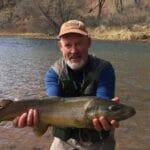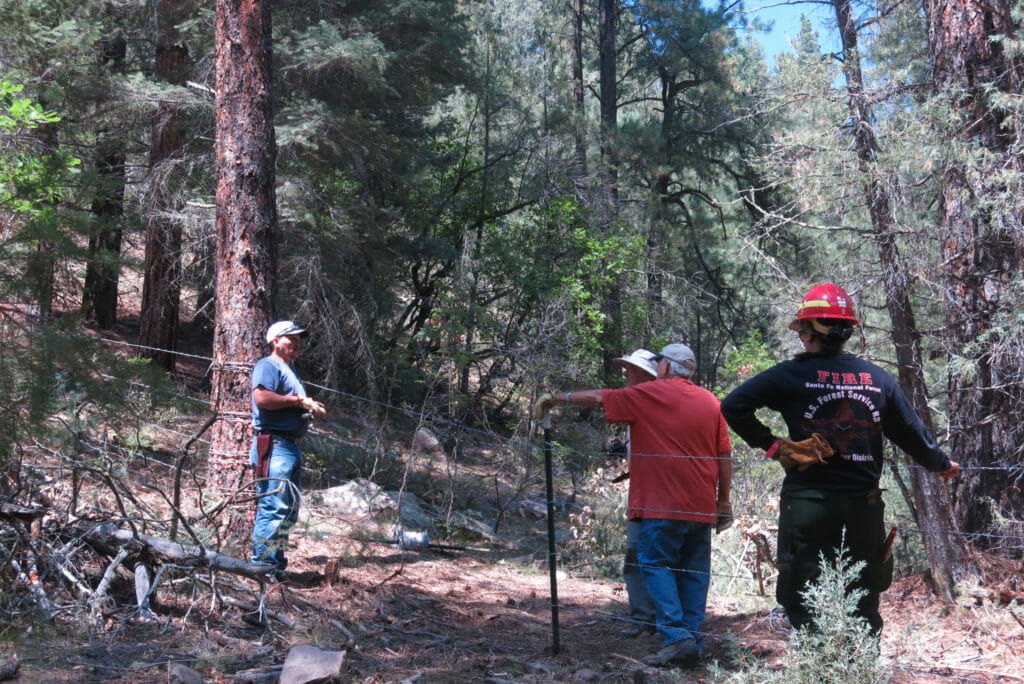
Effective partnerships win
The 2014 listing of the New Mexico Meadow Jumping Mouse as a federally endangered species caused the closure of an expansive meadow along the Rio Cebolla to all uses – camping, fishing and especially grazing. As a gathering pasture in the spring and fall, the meadow was critical to the operations of the San Diego and Cebolla/San Antonio Grazing Associations. With the loss of the meadow came losses in efficiency, and though the permitees went to court, the closure remained in effect; cows and recreationists were out.
Any angler who’s stepped in a cow pie or seen a trampled streambank might have cheered this outcome. But what if that angler was wrong, or at least took a moment to contemplate and alternative in which all the characters in this story – jumping mice, anglers and ranchers – might live happily ever after? When the fence was constructed, Trout Unlimited contacted the grazing associations and asked what could be done to offset the loss of their important pasture.
It turned out a lot could be done. Another favorite pasture had gone underutilized for ten years due to worn out watering infrastructure. A supply well serving mesa-top cattle (and, let’s be honest, wildlife) drinkers had been sitting in ruin for seven years. Dirt tanks needed cleaning and modernizing. Fences needed to be built and repaired to keep cattle from wandering down to creeks and impacting the riparian areas.
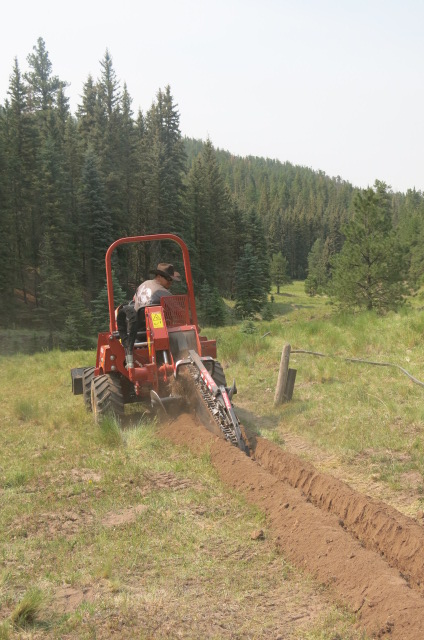
Across both allotments, catching up on deferred maintenance would make up the lost capacity from the jumping mouse listing, and though up to the work themselves, the grazing associations welcomed support from TU and its four New Mexico chapters. TU contributed volunteers for fence and waterline installations and pitched in for equipment rental, fuel, a portable corral to minimize cattle trailing. It also assisted in the development of an infrastructure improvement checklist to guide future projects. Implementation of checklist priorities will add even more flexibility to ranching operations, enabling adaptations to changing land and water conditions.
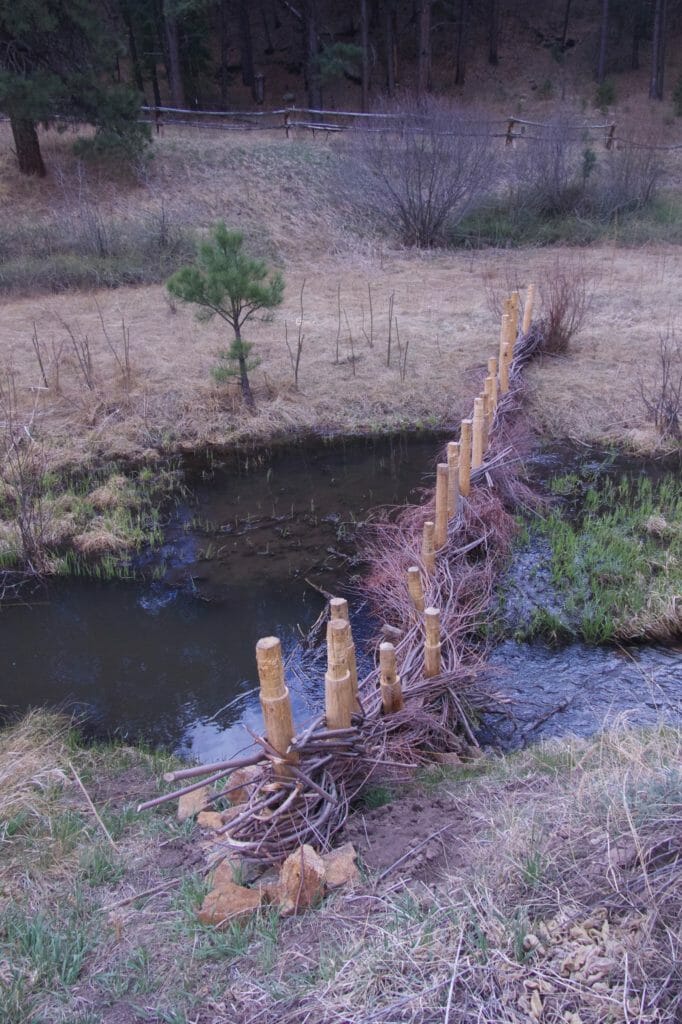
Another result of the TU/rancher partnership was the Forest Service’s increased interest in working with the ranchers towards optimal productivity and allotment health. Perhaps in recognition of this interest, the Forest Service recently presented Trout Unlimited and the San Diego and Cebolla/San Antonio Grazing Associations with the 2019 Southwest Region’s Partnership Award, a testament to collaboration and multiple use, not to mention the value of standing in each other’s boots.
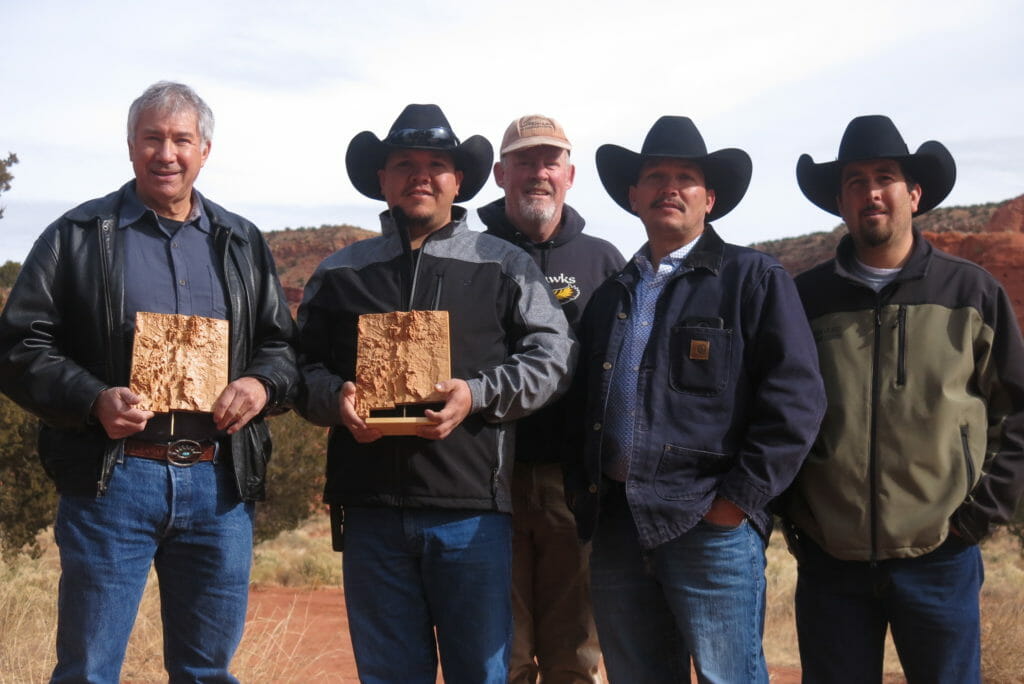
For trout advocates, the fear of permanent loss is a job hazard. It’s factored into almost everything we do – loss of resilience, shade, topsoil, pool habitat, spawning gravel, native trout – or at least it should be. Diversity is not something you want to lose either since the most diverse habitats absorb the heaviest disturbance. They simply function better – streams with a broad array of food items, aquatic and riparian vegetation and habitat types usually fish the best.
A bit of history
Time with TU’s ranching partners has been another lesson in diversity. Their families have worked this same country since before New Mexico was a state, before the Forest Service existed and since New Mexico was still a Spanish territory. Since before 1798, when the Canon de San Diego Land Grant was established, the ranchers’ ancestors grazed cattle and sheep, farmed the lowlands, and harvested game, fish, timber and medicinal plants from the mountains and mesas. They adapted to disruptions like the grizzly bears with whom they shared the country.
It’s a history that not only spans time, but a diversity of experiences, natural cycles and catastrophes.
Before industrial scale logging, ranching and mining rewrote the landscape, it was a much more complex ecosystem than it is today. Wolves kept the elk in check, Mexican spotted owls probably fed on abundant meadow jumping mice and the only trout swimming in the streams were Rio Grande cutthroat trout. Along with native peoples that had survived on the land for millennia before them, Spanish settlers played a positive role in this ecosystem.
At any point on this timeline, they couldn’t have survived into the future without heeding the lessons of the past. That is how ecosystems work, how species and cultures persist through tumultuous change.
A look to the future
The grazing associations face different challenges than their ancestors did – off road vehicles, abandoned campfires, cut fences and other forms of vandalism and the demands of a society that increasingly values recreation and imperiled species over the viability of rural culture. Though a blessing, being on the land so much more than the rest of us is also the ranchers’ burden, for we depend on their stewardship and its role in creating resilience on the land.
In the spirit of true friendship, New Mexico’s TU chapters recognize that the ranchers will be better equipped to persist in their ecosystem, through all of its demands and responsibilities, with reliable partners at their side.


